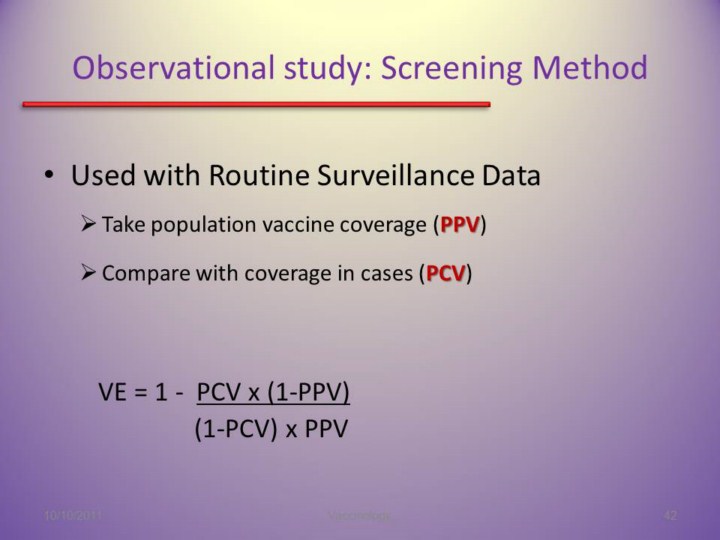Search for most updated materials
 |
 |
front |1 |2 |3 |4 |5 |6 |7 |8 |9 |10 |11 |12 |13 |14 |15 |16 |17 |18 |19 |20 |21 |22 |23 |24 |25 |26 |27 |28 |29 |30 |31 |32 |33 |34 |35 |36 |37 |38 |39 |40 |41 |42 |43 |44 |45 |46 |47 |48 |49 |50 |review |
 Also known as case-population studies. This provides a preliminary estimate of VE usually during an outbreak investigation among a vaccinated population and provides reassurance that the proportion of vaccinated cases is what would have been expected given the vaccine uptake in the population. Through a series of curves, the VE is estimated by comparing vaccine uptake amongst cases (PCV) with vaccine uptake in the population (PPV). Generally with higher population coverage, vaccine uptake also increases among cases. However, it provides a poor estimate at the limits of the curve when the population coverage is either very high or very low. The main limitations of this method are that it allows very little control of confounding - thus it is important to be sure that the cases are from the same population as the PPV data. This is partially achieved by ensuring both PPV and PCV are from the same age groups.
However it does seem to have a role in the initial determination of a need for a further more methodologically rigorous study. |